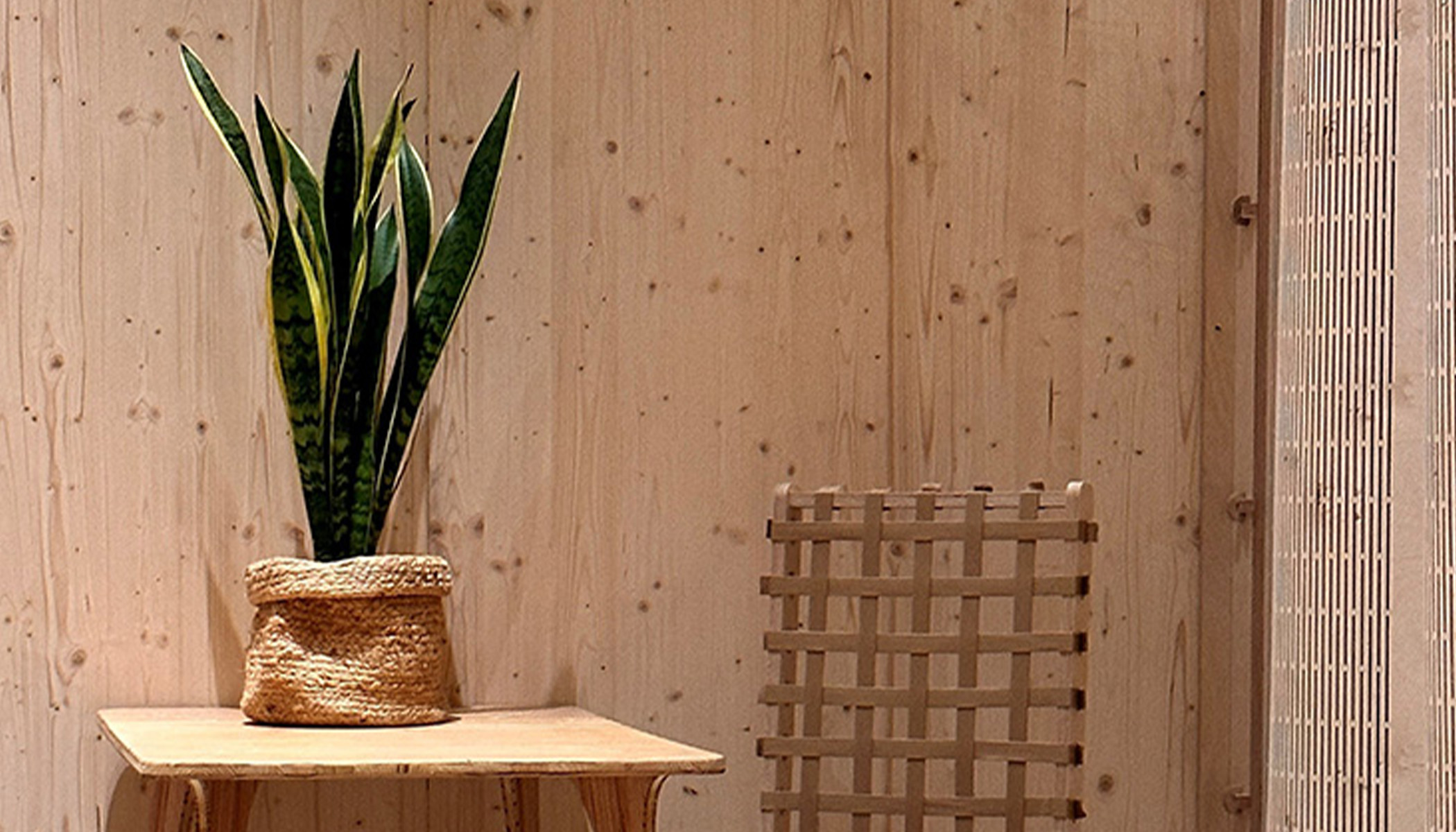Kerfed design solutions:
Sustainable, foldable wooden walls for flexible, dynamic living solutions
The way we construct indoor spaces for people is currently flawed. The permanence of current buildings limits people’s freedom to change their surroundings and restricts their ability to adapt to impermanent ways of working and frequently changing personal circumstances.
To escape the trap of traditional construction, individuals and businesses must spend thousands of pounds to change their spaces, generating large quantities of waste materials and greenhouse gases in the process.
To solve this issue Ana Gatóo and Michael Ramage from the Centre for Natural Material Innovation have designed an invention to replace traditional walls. The innovation is a flexible wooden partition that can easily be folded and stored when a spatial change is required. This allows large spaces to be generated in houses dynamically in reaction to changing circumstances, additional bedrooms to be erected in flats at barely any cost and closed off offices to be quickly and easily changed to an open plan without the generation of waste.
The wooden partitions are produced via timber engineering making them a cheap and sustainable product that will generate far less CO2 during their life cycle than traditional materials.
Technology overview
The partitions are made entirely of wood using a technique called kerfing, so will generate little carbon during their life cycle. The wooden partitions could be retrofitted to offices and houses meaning they would no longer have to be completely gutted every time the space is to be changed. Instead of throwing partitions away they can be easily stored unlike traditional material. This will of course dramatically reduce waste.
The partitions are not expensive to make, so if adopted on mass they should make housing more affordable.
The partitions are light weight, flexible and easy to store. Hence, using these instead of traditional materials makes housing far more adaptable.
Benefits
- Flexible and lightweight
- Sustainably sourced materials
- Easily stored and transported due to being foldable
- Easy, low-cost fabrication with a CNC machine
Applications
The technology can be used to replace traditional walls in housing and workspaces. This could be of interest to:
- Construction companies
- Architecture firms
- Interior designers
- Modular housing companies
- Product designers (including furniture)
And their customers e.g., social housing providers, housing developers, self-builders, companies leasing large office spaces, hospitals, and schools
Opportunity
(Opportunity for housing authorities, product/furniture designers, first adopter funders/architecture practices to get involved)
- We can offer expertise on how to produce and refine the technology.
- We can provide a public platform through the University and the high-profile collaborators in the project to encourage early adoption and highlight future sustainable living solutions
- We can provide consultancy services related to the future of modular housing and how architectural and construction firms can take steps to incorporate research-based best practice in sustainability, accessibility, and affordability into their designs.
Inventors
Prof. Michael Ramage, Professor of Architecture and Engineering
Prof Michael H. Ramage leads the Centre for Natural Material Innovation at the University of Cambridge and is Professor of Architecture and Engineering in the Department of Architecture and a Fellow of Sidney Sussex College, a Chartered Member of the Institution of Structural Engineers, and a founding partner of Light Earth Designs. He studied geology and archaeology as an undergraduate, followed by architecture at MIT, and worked for Conzett Bronzini in Switzerland prior to teaching and getting a PhD at Cambridge. His research is focused on reducing embodied carbon in the built environment by using natural materials as better alternatives to steel, concrete, glass fibre and carbon fibre. He applies this research by developing low-energy structural materials and systems in masonry, better housing, schools and large-scale high-rise buildings in engineered timber and bamboo through natural material innovation. He teaches, researches, and designs buildings, and receives funding from the Leverhulme Trust, the Engineering and Physical Sciences Research Council, the Royal Society, the British Academy, the Laudes Foundation, and industry.
Ana Gatóo, Researcher
Ana is a researcher and PhD candidate at the Centre for Natural Material Innovation (CNMI) in the Department of Architecture at the University of Cambridge. The focus of her current research is the development of flexible and affordable housing with the use of engineered timber and digital tools for future cities. She has previously worked at the CNMI developing structural bamboo products and better housing with natural materials in informal settlements.




